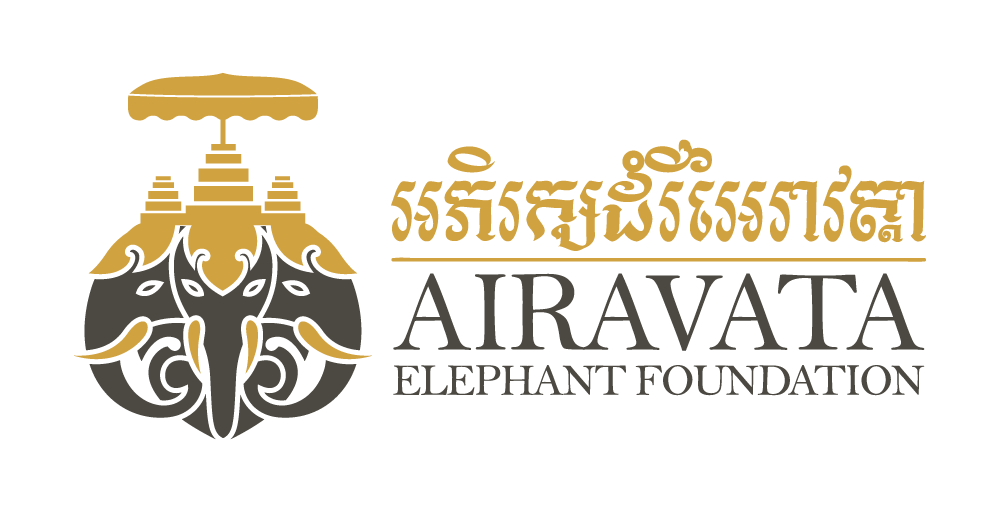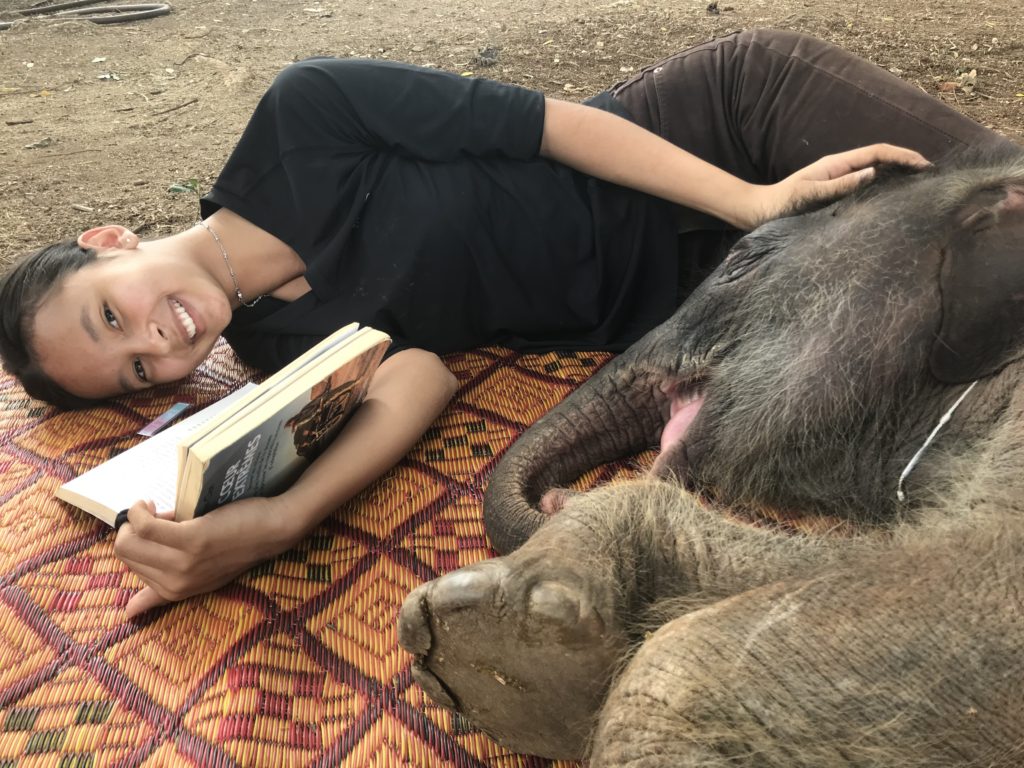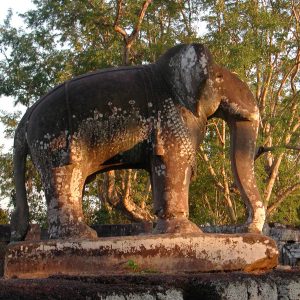Noëlle’s morning program
Arrival at the Aïravata site at 9AM.
Presentation of Aïravata, of the place and our philosophy.
Preparation of the milk bottles and Noëlle’s bath. We leave for the enclosure, greet mother and daughter and give treats to the mother while listening to the story of Ikeo and of her unlikely pregnancy. We take Ikeo to the training area, hose her, brush her nails with shampoo and do a health check Noelle’s bath, we wash her with shampoo, check her weight while giving her the bottle to get on the scale.
All this done, we take mother and daughter into the forest, walking to the place where they will spend the day together. It is elephant school for Noëlle as by observing her mother and mimicking her, she learns what plants to eat or not to eat. We return and eventually observe the training of the other elephants (power washing, etc).
Noëlle’s afternoon program
Arrival on the Aïravata site at 3pm.
Presentation of Aïravata, of the place and of our philosophy.
Preparation of the milk bottles. We go to the forest to the meeting point with Ikeo and Noëlle or decide to wait for them at the camp. We check Noëlle’s weight while giving her milk and we give treats to the mother. Then we go down to the river below to wash the elephants. Those who don’t want to go in the water can take pictures from the small wooden bridge a few meters away. We take the mother and child back to the enclosure for the night.
A full Day with Noëlle
Arrival at the Aïravata site at 9 AM
Presentation of Aïravata, of the place and our philosophy.
Preparation of the milk bottles and Noëlle’s bath. We leave for the enclosure, greet mother and daughter and give treats to the mother while listening to the story of Ikeo and of her unlikely pregnancy.
We take Ikeo to the training area, hose her, brush her nails with shampoo and do a health check
Noelle’s bath: we wash her with shampoo, check her weight while giving her the bottle to get on the scale.
All this done, we take mother and daughter into the forest, walking to the place where they will spend the day together. It is elephant school for Noëlle as by observing her mother and mimicking her, she learns what plants to eat or not to eat. We return and eventually observe the training of the other elephants (power washing, etc).
Lunch and rest until 2pm. Elephant ride to the Katieng waterfall. Back to the camp to wait for Ikeo and Noelle, we check Noelle’s weight while giving her milk and we give treats to the mother.
Elephant “Spa”
Introduction to the elephants and their mahouts before going down to the river to wash and scrub the elephants then give them a treat of bananas or sugar cane.
The elephant ride can easily be combined with the «Spa», in this case the tour lasts about 4 hours.
Elephant Ride
Introduction to the elephants and their mahouts before getting on the saddle for an hour and a half of walk to discover the Katieng forest.
Elephant “Mahout for a day”
Go to “mahout school” in the morning and learn the basics of riding an elephant, do a little test ride in the nearby forest before lunch then proceed with a siesta to avoid the hottest hours before undertaking a long ride in the forest in the afternoon to master what was learnt in the morning. Back from the ride we wash our friends in the small river nearby and reward them with treats before we leave.
Duration of the activity, about 7 hours, back in the afternoon.
Khmer Traditional Weddings
Putting the elephant back in its proper place in Cambodian society is one of the main goals of Aïravata !
It is now possible to organize a wedding in the purest Khmer tradition, with elephants!
For that you must of course come to Ratanakiri where the teams of Airavata and Terres Rouges lodge will join hands so that the most beautiful day of your life is placed under the best omen and enjoys the blessing of the largest animal of the earth.
To ride or not to ride an elephant?
Some people think that being a wild animal the elephant shouldn’t be ridden, they think it is cruel and physically damages the animal.
We believe that only abuse is bad, making elephants carry heavy loads for long hours is bad, this is not what we do.
However, the elephant has an imperative need to be physically active; regular activity builds up muscles and de-stresses the animal, it is vital for its balance!
In captivité, rides of a few hours each day help provide this balance, as well as maintaining the link between the mahout and the elephant.
We can’t help but notice that the champions of the elephants’ rights do not seem to care so much about the fate of the horse or the donkey which were not born to carry people on their back but still do it everyday with loads that are much heavier in comparison to their size and bone structure…
Our elephants were already tame when we acquired them, they can’t live in the wild any more, they are not afraid of man and if we set them free they would destroy people’s crops and houses and be killed for that.
Ours is a pragmatic approach but it is also a cultural one, the link between man and the elephant has existed for five thousand years and is an integral part of Khmer Culture.
We continue this tradition.
What to wear and bring with you ?
Clothes that do not show dirt (like army fatigues for instance) and thick enough as elephant hairs can prick, two pairs of shoes or at least one that can go in the water.
Maybe a pair of shorts or swimming trunks for the elephant bath.
Some mosquito repellent, sunscreen, a hat and a raincoat during the rainy season.




